Top Photo: Northern water snake.
Where there’s water there’s likely to be water snakes. If there are fish, frogs and tadpoles present the likelihood of snakes on the scene goes way up. If you live here on the Carolina Piedmont the snake you see is almost sure to be a northern water snake (Nerodia sipedon).
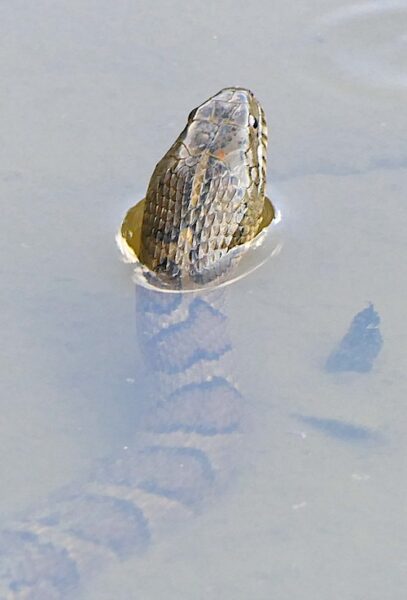
In our little wetland at the Museum of Life and Science, I’ve never seen anything but northern water snakes. There are at least eight other species documented on our 84 acres, but in the water there’s only one, northern water snake.
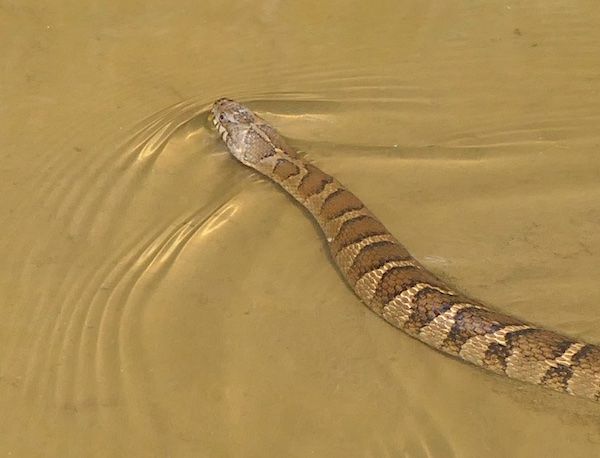
Northern water snakes average almost 3 feet in length but can reach 5 feet. They’re aggressive and will bite if harassed, stepped on or picked up. They’re non-venomous but you’d still be better off leaving these snakes lie.
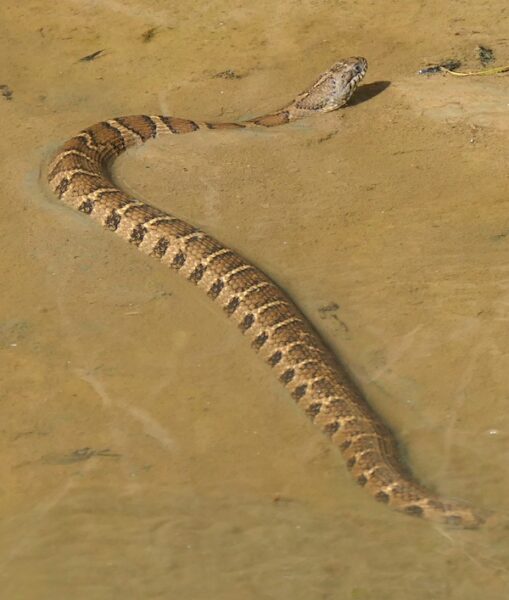
In the interest of identification, notice how the bands on the snake begin to break up about a quarter of the way down the body. This is an identifying characteristic of northern water snake. Banded water snakes have bands that are consistent the entire length of the body. They’re a coastal plain species and not likely to be seen here, but worth mentioning.
Northern water snakes breed in spring and give birth in late summer to early fall. Now!
They’re ovoviviparous, which means young develop in eggs inside the adult’s body. The young leave the adult’s body at hatching. Twelve to 24 young are typical but as many as 44 and more have been recorded. They’re self sufficient at birth.
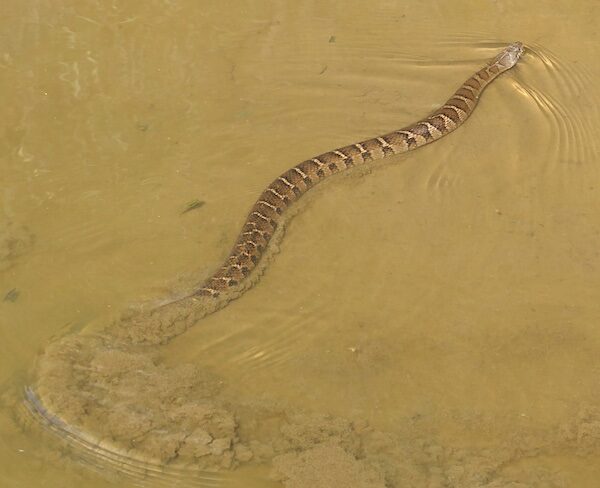
Keep an eye out for one of these aggressive water snakes, especially while walking the Floating Walkway. They’re fascinating to watch. Their main prey are amphibians and fish.
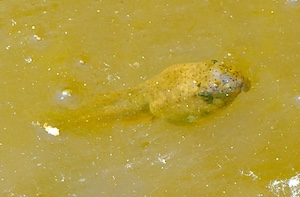
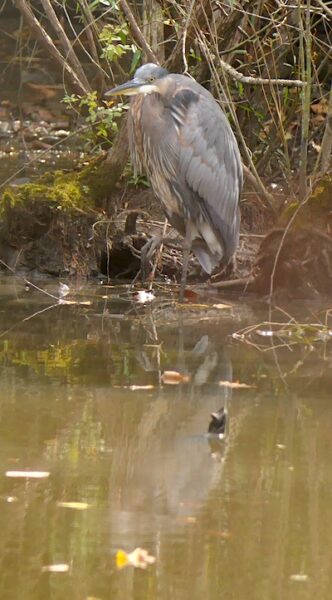
Ranger Greg